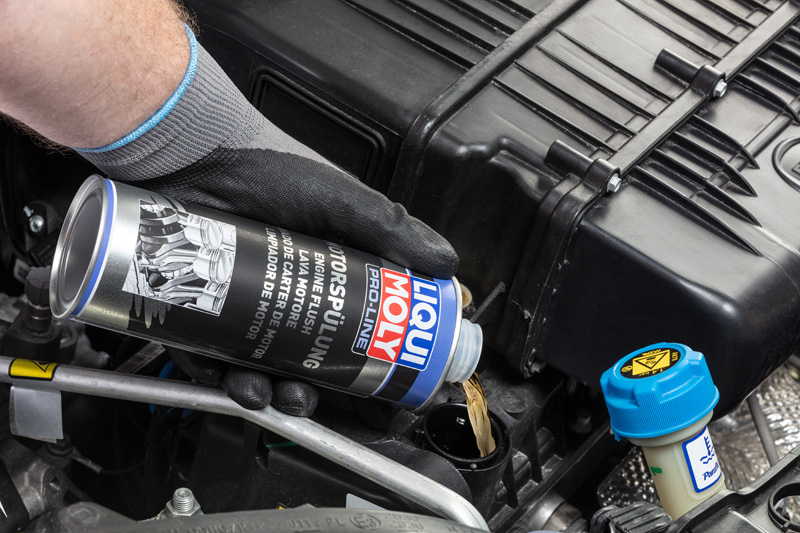
David Kaiser, Head of Research and Development at Liqui Moly, discusses some best practice when it comes to engine oils in hybrid vehicles.
If a hybrid vehicle is often driven on electric power, car owners often neglect to change the oil – after all, the combustion engine was rarely used. Garages should ensure that the oil change intervals specified by the manufacturer are actually adhered to, advises David Kaiser, Head of Research at Liqui Moly.
There is a good reason why the oil-change intervals are not only determined by mileage but also based on the time that has passed: even if a car is not driven much, or is mainly used in electric mode, the oil in the engine ages as the days go by. It gradually oxidises and becomes less effective. There is another problem with hybrid vehicles, too.
Water condensation and fuel residues accumulate in the oil circuit due to the fact the combustion engine undergoes frequent cold starts and short periods of use. In a pure combustion engine this is not an issue, because as soon as the oil has reached its operating temperature, the water and petrol vaporise in the oil. In hybrids, the engine oil rarely reaches the operating temperature, so more water and petrol can accumulate in the oil circuit. This increases wear and tear – and it is conducive to corrosion, too.
So it’s important not just to change the oil but also to thoroughly clean the oil circuit at the same time. This can be done using Liqui Moly Engine Flush. Just before changing the oil, the additive is added to the engine oil and the engine is then run at idling speed for 10 minutes. During this time the active ingredients remove any deposits and debris, which is then simply drained out together with the used oil. The fresh oil then goes into a clean engine, so it can achieve maximum performance.
Metal on metal
There is another problem caused by frequent cold starts in hybrid vehicles: on each occasion, it takes several seconds for the oil to reach every part of the engine, depending on the ambient temperature. Until that happens, metal rubs against metal – pure wear and tear.
In the case of pure combustion engines, cold starts are not much of a factor overall. The situation with hybrid vehicles is very different: here it is a good idea to add Liqui Moly Cera Tec to the oil. This is a wear-and-tear protection additive that provides dual protection for the engine. Firstly, there is physical protection by means of tiny ceramic particles that spread out on the metal surfaces to prevent direct metal-to-metal contact.
Secondly, chemical protection is provided by so-called friction modifiers which smooth the metal surfaces and prevent friction. The use of Cera Tec significantly reduces wear and tear during the cold start phase.









